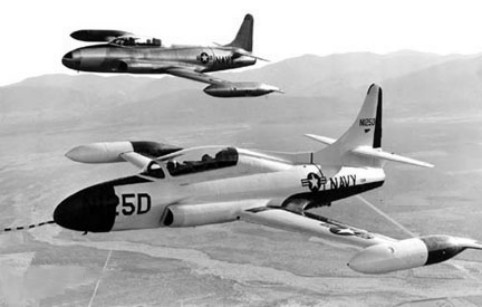|
NAF Washington
Naval Air Facility Washington or NAF Washington is a United States Naval Reserve installation located near Camp Springs, Maryland in the United States of America. The facility was established at Andrews Air Force Base in 1958. As part of the 2005 Base Realignment and Closure (BRAC) programme, it merged with Andrews Air Force Base in 2009, to create Joint Base Andrews-Naval Air Facility Washington. History Establishment In 1958 when airspace around Naval Air Station Anacostia in Washington, D.C became too crowded and Anacostia's runways were deemed too short, the naval air activities were moved to Andrews Air Force Base to facilitate jet operations with a detachment of T-2V SeaStar jet trainers. An A-4 Skyhawk became the last jet aircraft to fly out of NAS Anacostia on 25 January 1962 with the transfer to Andrews AFB being complete in December 1961. Captain Frank D. Heyer transferred his command from Anacostia to Andrews, concurrent with the commissioning of the new Naval Air ... [...More Info...] [...Related Items...] OR: [Wikipedia] [Google] [Baidu] |
Camp Springs, Maryland
Camp Springs is an unincorporated area and census-designated place (CDP) in Prince George's County, Maryland, United States. The population was 22,734 at the 2020 census. Camp Springs is not an official post office designation; the area is divided among the surrounding mailing addresses of Temple Hills, Fort Washington, Clinton, and Suitland. History The community of Camp Springs was settled in the mid-19th century at the crossroads of present-day Branch Avenue and Allentown Road. By 1860, the settlement contained several stores, a blacksmith shop, a school, Methodist church, and several residences. Early maps record the name of this settlement as Allentown, after the Allen family. The Allens were large landholders in the area, and the town, adjacent road, and Allenwood Elementary School were named in recognition of them. The town's popular name, and subsequently the name of its post office, was Camp Springs. According to local history, the community was called Camp Springs since ... [...More Info...] [...Related Items...] OR: [Wikipedia] [Google] [Baidu] |
Lockheed T2V SeaStar
The Lockheed T2V SeaStar, later called the T-1 SeaStar, is a carrier-capable jet trainer for the United States Navy that entered service in May 1957. Developed from the Lockheed T-33 (itself derived from the Lockheed P-80 Shooting Star), it was powered by one Allison J33 engine. Design and development Starting in 1949, the U.S. Navy used the Lockheed T-33 for land-based jet aircraft training. The T-33 was a derivative of the Lockheed P-80/F-80 fighter and was first named TO-2, then TV-2 in Navy service. However, the TV-2 was not suitable for operation from aircraft carriers. The persisting need for a carrier-compatible trainer led to a further, more advanced design development of the P-80/T-33 family, which came into being with the Lockheed designation L-245 and USN designation T2V. Lockheed's demonstrator L-245 first flew on 16 December 1953 and production deliveries to the US Navy began in 1956. Compared to the T-33/TV-2, the T2V was almost totally re-engineered fo ... [...More Info...] [...Related Items...] OR: [Wikipedia] [Google] [Baidu] |

